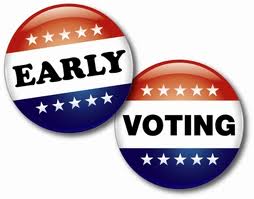Before I get to the numbers, here’s a Chron overview of the Pasadena Mayor’s race that mentions the numbers towards the end.
“I believe it’s a pivotal time in this city’s history – that it can either draw together and continue being one city, or it can divide apart and be fractured,” said John Moon Jr., a commercial real estate agent who grew up in Pasadena and worked as a banker for more than 30 years.
In addition to Moon, the field of candidates includes Pasadena city council members Pat Van Houte and Jeff Wagner; Robert Talton, who served as a state representative from 1993 to 2009; Gilbert Peña, who represented the same district from 2015 until 2017; David Flores, a former city employee who runs a Pasadena-based construction business; and Gloria Gallegos, an assistant superintendent with the Pasadena Independent School District.
[…]
The candidates are stressing different issues.
Talton is campaigning for increased investment in the city’s police and fire departments and senior services. Moon wants a five-year capital improvement plan. Gallegos, based on her experience with the school district, is pushing workforce development programs to bring people out of the city’s growing poverty.
Peña has said he will invest in programs to grow small businesses. Flores is calling for city departments to formally justify funding requests. Flores has five misdemeanor convictions from 2001 to 2004, including for theft, assault and evading arrest, and giving a false name to a police officer. He said his trouble with the law helped spur a commitment to public service.
Van Houte, among others, calls for increased transparency among the city and touts her ability to speak English and Spanish as a means to better communicate with voters. She once was escorted from a council meeting after questioning Isbell’s redistricting plan.
Wagner emphasized boosting employee morale.
But while there are differences in the candidates’ priorities, all emphasize a strong need to break from the past, including what some have described as a “political machine” associated with Isbell.
“That machine is not alive and well right now, without a doubt,” Wagner said. “In the past, I’m sure they had it. But, this is a new day.”
It’s unclear whether the alleged disparate treatment of Latino residents will result in higher turnout by Hispanic voters. Historically, Hispanic voters have turned out at lower rates than white voters.
As of Tuesday, just more than 3,200 had cast ballots at Pasadena City Hall, which University of Houston political scientist Brandon Rottinghaus said was high. Rottinghaus said roughly 50 percent of voters come out to early voting, with another 50 percent on Election Day. In 2013, the number who cast ballots early was 1,327, according to city records.
Here are the final EV totals, which I saved for posterity since you never know when I may feel the need to reference them. (Like, maybe for the Pasadena Mayor’s race runoff.) There were 3,204 in person early votes cast in Pasadena, but that’s not the sum total of all votes, as of course there are also absentee ballots. I asked around and was informed that as of yesterday 1,548 mail ballots had been returned as well, for a grand total of 4,752. If Professor Rottinghaus is correct about how many votes are cast early versus on Election Day, then we are headed for either about 8,000 total votes cast or 9,500 total votes cast, depending on whether he meant to include absentee ballots in the half of votes being cast early.
That’s obviously a lot more than 2013, when Mayor Isbell was very lightly challenged by current candidate and former State Rep. Gilbert Pena. A better comparison is to 2009, when a much more contested Mayoral race drew 7,539 votes. This year seems to be on track to exceed that, possibly by a fair amount.
I’m not exactly sure how to tally up the early votes for Humble ISD, as there are two early vote locations in Humble ISD buildings plus a third location at Humble City Hall. The first two have seen a combined 2,817 votes, with another 426 at Humble City Hall. There are also some number of absentee ballots, but I have no way of knowing how many. In 2015 there were 2,150 early in person votes cast and 1,358 Election Day votes cast; in 2013 it was 2,410 early in person and 1,767 on Election Day. No matter how you slice it, this year looks busier, though it’s hard to say by how much.
Finally, in Brazoria County there have been 3,139 early in person votes cast in Pearland, which I will presume covers both the city and Pearland ISD. Just that amount, which does not include absentee ballots, is more than the grand total for the 2014 Pearland ISD election (the trustees there appear to serve three-year terms), in which 2,868 total votes were cast. The city of Pearland also appears to be on three-year terms, so they have elections each year. Turnout figures for those last three years: 2,744 in 2016, 3,559 in 2015, and 3,387 in 2014, which was the previous Mayor’s race. Again, it would seem that turnout will be higher than in any of those years, though at least some of that may be fueled just by population growth, as the number of registered voters in Pearland climbed from 58,563 in 2014 to 63,584 in 2016. Still, we appear to be three for three in terms of increased voter participation. We’ll see what if anything that means for the results.

